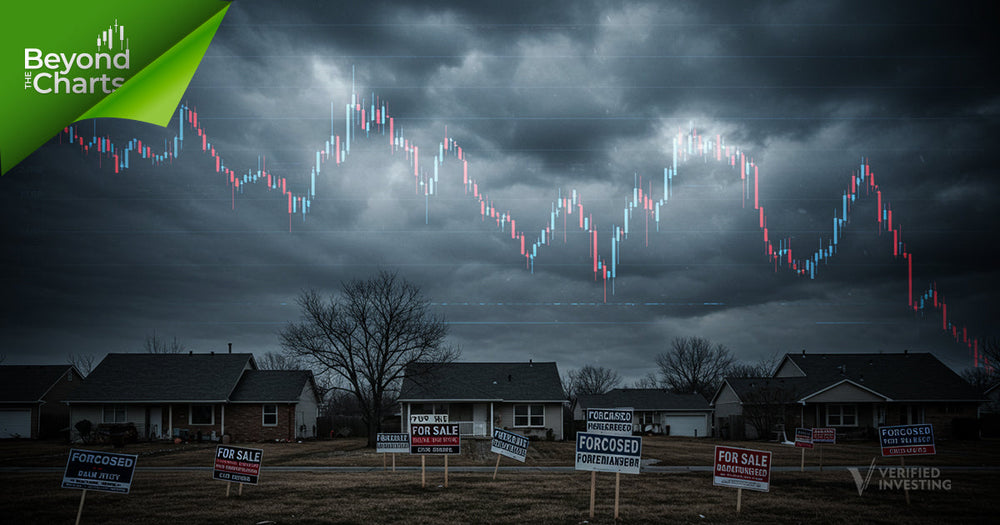Financial Bubbles Across History: Lessons from Tulips, Railroads, Dot-Coms, and Beyond

Unraveling the Rise and Fall of Speculative Manias to Safeguard Your Portfolio from the Next Bubble
The Timeless Phenomenon of Financial Bubbles
On a crisp spring morning in Amsterdam, a modest flower merchant stood in a bustling market. It was the 1630s, and the tulip—once an exotic curiosity—had become a phenomenon commanding astronomical prices. The merchant watched in disbelief as a single rare bulb sold for more than the cost of a well-appointed home. Miles away and centuries later, in the grand offices of a London railway boardroom during the mid-1800s, investors clamored to fund new rail lines. They believed these iron roads would reshape trade and wealth forever, undeterred by looming questions about profitability and feasibility.
Fast-forward to the late 1990s in Silicon Valley, where a tech startup, offering little more than an idea and a dot-com domain, skyrocketed in valuation overnight. With each success story fueling the frenzy, caution gave way to euphoria—until the bubble finally burst, wiping out trillions in market value.
Across eras and continents, speculative bubbles have followed a remarkably similar script. Buoyed by new technologies or novel commodities, markets enter a euphoric phase that eventually ends in collapse, leaving fortunes destroyed and reputations tarnished. Yet from the ashes of each bubble, new industries, lessons, and regulations often emerge, reshaping the financial landscape for generations.
In this installment of Beyond the Charts, we’ll dive into major financial bubbles throughout history—from the mania over tulips in the Dutch Golden Age to the railroad boom of Victorian England, the Roaring Twenties, and the Dot-Com explosion. Through vivid storytelling, factual data, and time-tested insights, we aim to equip you with the understanding to recognize and—ideally—sidestep the next bubble that inevitably arises on the horizon.
Tracing the Historical Roots of Financial Bubbles

Speculative manias are as old as commerce itself. While the Dutch Tulip Mania of the early 17th century is often cited as the first “modern” bubble, evidence suggests that even ancient civilizations, such as the Romans, experienced localized forms of market hysteria over prized goods like silks and spices.
What sets the Dutch tulip craze apart is the intensity of its rise and the dramatic collapse that ensued when reality reasserted itself. Prices for certain tulip bulbs—especially newly introduced, colorfully striped varieties—soared to levels that far outstripped any rational valuation. Some bulbs changed hands multiple times in a single day, each transaction at a higher price than the last. When confidence wavered, the cascade of panic selling brought prices crashing down with equal speed.
A similar pattern emerged in 18th-century England during the South Sea Bubble, where shares in the South Sea Company surged on grand promises of untold riches from foreign trade. Fueled by political connections and public excitement, the stock soared—until insider sales and glaring inconsistencies came to light, triggering an abrupt collapse that rattled the British financial system.
In the United States, the late 1800s saw the Railroad Mania, as railroads promised to shrink vast distances and unlock new frontiers. Investors poured money into tracks that sometimes led nowhere. The same century also witnessed the boom-and-bust cycles tied to land speculation, especially during the frontier expansion era.
Fast-forward to the roaring 20th century: from the Florida real estate bubble of the 1920s to the Dot-Com mania of the 1990s, each episode demonstrated how technological or geographical frontiers ignite optimism—and, at times, reckless speculation. The 2008 Global Financial Crisis, rooted in subprime mortgages, showed that even the once-staid housing market could become fodder for a colossal bubble.
Although each bubble boasts unique triggers, they follow a similar emotional arc: initial discovery, rapid price escalation, widespread enthusiasm, euphoric peak, and an eventual crash. This recurring pattern highlights one essential truth: when greed and group psychology outpace fundamental value, a bubble is likely inflating, primed to burst once reality intervenes.
Dissecting Financial Bubbles: Data and Insights
The Anatomy of a Bubble
Across all historic manias, experts identify stages that serve as warning signs:
-
Displacement (or Innovation)
- A new product, technology, or market emerges. Enthusiasm grows as investors imagine limitless potential.
- In the railroad boom, the “displacement” was the promise of steam power shrinking the globe. During the Dot-Com era, it was the internet’s boundless future.
-
Boom
- Early adopters and savvy investors see significant returns, fueling media coverage. A larger crowd joins in, convinced they too can profit quickly.
- Easy credit, whether through banks or alternative lending, often amplifies buying frenzy.
-
Euphoria
- News of quick fortunes triggers rampant speculation. Conventional valuation metrics are dismissed as outdated—after all, “this time is different.”
- In the Dot-Com bubble, startups with no earnings soared to billion-dollar valuations merely on the promise of eventual market dominance.
-
Profit-Taking
- Insider players or perceptive investors realize valuations have become absurd. They quietly sell or short the market.
- As their withdrawals intensify, cracks form in the bubble’s narrative.
-
Panic and Crash
- Once prices stall or begin sliding, fear grips the market. A race to the exits ensues; liquidity vanishes, driving prices into freefall.
Key Examples and Data Points
-
Tulip Mania (1630s)
- At the bubble’s height, a single rare bulb could trade for roughly 10 times a skilled craftsman’s annual income.
- When panic hit, bulb prices dropped over 90% in a matter of weeks, devastating speculative buyers.
-
Railroad Mania (1840s–1850s)
- An 1850s analysis of English rail companies found that nearly half of proposed lines either went bankrupt or never broke ground, despite raising substantial capital.
- The mania spurred advancements in railway technology, but many small investors lost life savings in doomed ventures.
-
Dot-Com Bubble (Late 1990s to Early 2000)
- The NASDAQ Composite soared from around 1,000 in 1995 to above 5,000 by early 2000—a 400% increase in half a decade.
- Post-crash, the NASDAQ lost nearly 78% of its value from its peak, wiping out trillions in market capitalization.
-
Housing Bubble (Mid-2000s)
- Easy credit and mortgage-backed securities fueled a real estate frenzy. Average U.S. home prices nearly doubled from 2000 to 2006, only to plunge sharply by 2008.
- The global financial system teetered on collapse, requiring massive government interventions and reshaping regulatory frameworks worldwide.
The Psychology Behind Speculation
Bubbles reveal as much about human psychology as they do about markets. Common biases include:
- Confirmation Bias: Investors often seek out news and data reinforcing the prevailing bullish narrative, ignoring contradictory evidence.
- Herding: Fear of missing out (FOMO) drives people to follow the crowd, fueling exponential price growth.
- Overconfidence: Initial successes embolden speculators, who believe they can exit at the right time—underestimating how quickly sentiment can change.
Stat: A study published in the Journal of Behavioral Finance (2021) found that in the final stages of a bubble, over 70% of participants believed they could “time their exit,” yet less than 10% managed to sell before the crash accelerated.
Aftermath and Long-Term Effects
While bubble bursts often leave individual investors in ruin, they can also pave the way for meaningful transformations:
-
Industry Shakeout
- Stronger companies that survive tend to dominate once the dust settles. In the Dot-Com crash, firms like Amazon and eBay emerged leaner and more focused.
-
Regulatory Overhauls
- From the Securities Act of 1933 (post–1929 crash) to Dodd-Frank (post–2008 crisis), major busts often prompt stricter regulations.
-
Technological & Infrastructural Growth
- The excesses of railroad speculation eventually yielded robust rail networks. The Dot-Com bubble spurred massive investments in the internet backbone, laying foundations for today’s digital economy.
Spotting and Surviving the Next Bubble
Bubbles can form around any asset class—real estate, commodities, cryptocurrency, even fine art. While no crystal ball guarantees safety, these strategies can help:
-
Watch Valuations
- Compare price-to-earnings (P/E) ratios, revenue multiples, or real estate price-to-rent ratios to historical averages. Extreme deviations warrant caution.
-
Track Sentiment Indicators
- Tools like the Fear & Greed Index, social media sentiment, and fund flow data can signal when markets tilt toward euphoria.
-
Diversify
- Spreading investments across sectors and asset classes helps cushion losses if one bubble bursts.
-
Maintain Liquidity
- Keep a portion of your portfolio in cash or near-cash equivalents, ready to seize opportunities if a crash creates bargain prices.
-
Heed Contrarian Voices
- While it’s tempting to join the herd, listening to skeptics can offer a grounded counterpoint. Bubbles often thrive on uncritical optimism.
The “This Time Is Different” Trap
Economist Carmen Reinhart and Kenneth Rogoff famously highlighted a recurring phrase during boom times: “this time is different.” Believers argue that unique conditions—new technologies, special regulations, or a shift in economic fundamentals—justify stratospheric valuations. However, historical evidence shows that technology changes, but human psychology remains constant. When optimism turns to mania, the risk of a bubble amplifies, no matter how revolutionary the underlying invention may appear.
Personal Stories from the Crux of Financial Bubbles
Michel the Bulb Trader (Tulip Mania)
During the feverish heights of Tulip Mania, Michel, a modest merchant, noticed the frenzy around exotic striped bulbs. Hoping to secure his family’s future, he sold his small warehouse to buy three prized bulbs, confident their value would keep climbing. For a while, he reveled in paper riches—until the market turned. Overnight, Michel found himself with unsellable bulbs. With no place to store merchandise and dwindling savings, he was forced to rely on friends’ charity. Though the mania bankrupted him, Michel’s cautionary tale spread throughout Amsterdam, reminding future generations of the perils of unchecked speculation.
Laura the Tech Visionary (Dot-Com Era)
Centuries later in Silicon Valley, Laura founded a start-up offering an online marketplace for niche products. Venture capital poured in, valuing her fledgling operation at $500 million despite minimal revenue. Industry watchers saw her as the next Jeff Bezos. Realizing the hype was unsustainable, Laura quietly secured a secondary offering—cashing out some of her shares before the frenzy peaked. When the Dot-Com bubble burst, her company’s stock plummeted 95%. Though painful, Laura had retained enough capital to pivot, rebranding and slowly rebuilding. Her eventual success hinged on combining genuine tech innovation with realistic market expectations—a stark contrast to many contemporaries who rode the bubble blindly.
Lessons from Their Journeys
- Leverage vs. Liquidity: Michel’s downfall came from pouring too many assets into a single speculative bet. Diversification and liquidity buffers might have cushioned his loss.
- Realistic Valuations: Laura recognized the Dot-Com mania was inflating her company beyond any rational measure. By cashing out early, she balanced ambition with prudent foresight.
- Resilience After Collapse: Both overcame the crash’s fallout—Michel through community support, Laura through a strategic pivot—showing that while bubbles can be ruinous, they needn’t end an entrepreneurial spirit.
Their contrasting experiences underscore the timeless cycle of mania and collapse—pushing us to question when the euphoria around a new idea or asset crosses over into dangerous territory.
Weighing the Risks and Rewards of Financial Bubbles

Major Risks
-
Sudden Capital Loss
- When a bubble bursts, asset prices can tumble by 50% to 90%. Even high-quality companies suffer collateral damage, forcing investors to endure painful drawdowns.
-
Long Recovery Periods
- After the Dot-Com bust, the NASDAQ took nearly 15 years to regain its peak. Investors who bought at the top faced a protracted slog back to breakeven.
-
Systemic Crises
- Large-scale bubbles—like housing in 2008—can destabilize the entire financial system, sparking bank failures and global recessions.
Potential Rewards
-
Early Entry in Revolutionary Sectors
- True innovators often emerge from speculative booms. Early backers of Amazon or Google saw life-changing gains once the dust settled.
-
Buying Opportunities Post-Crash
- Market collapses can offer bargain prices for investors who remain liquid and patient, acquiring shares of solid companies at a fraction of their former cost.
-
Regulatory Reforms and Infrastructure
- The burst can pave the way for better oversight, consumer protections, and technological infrastructure that benefits the broader economy.
Bubbles embody duality: they highlight the best of human innovation and aspiration but also reveal the worst impulses of greed and herd mentality. For investors, it’s about harnessing the former while sidestepping the latter.
The Future Landscape of Financial Bubbles
The future will undoubtedly bring more bubbles—some in familiar sectors, others in yet-to-be-invented domains. Emerging technologies like quantum computing, biotech breakthroughs, or the metaverse could spawn new waves of excitement and inflated expectations. Meanwhile, the rise of retail investing communities on social media may accelerate speculation cycles, driving mania faster and with greater reach than ever before.
Regulators, too, will have to adapt, perhaps stepping in earlier when markets display bubble-like traits. AI-powered analytics might help identify suspicious price action or chatter, though the effectiveness of such measures remains untested. For savvy investors, vigilance is paramount: understand the fundamentals, monitor sentiment, and remain disciplined. A healthy dose of skepticism when valuations defy reason can prevent catastrophic losses, enabling you to capitalize on genuine long-term growth instead.
Call to Action: As you scan market headlines touting “the next big thing,” ask tough questions. Are valuations supported by cash flow and real-world demand? Who benefits from the hype? Does the narrative rely on “this time is different” rhetoric, or are there tangible metrics backing the optimism? By maintaining a critical eye, you can ride innovation’s waves without drowning in the froth of speculative excess.
Conclusion: Key Lessons from Financial Bubbles
From an Amsterdam flower market to Silicon Valley boardrooms, bubbles have a knack for seducing investors across time and geography. While each bubble boasts its own flair—be it tulips, railroads, or cryptocurrencies—they share a common foundation in human psychology, driven by euphoria and a hope that sky-high valuations will keep soaring.
Key Takeaways
- Recognizable Patterns: Bubbles typically ascend through innovation, boom, euphoria, then crash. Knowing the signs can help you steer clear or plan a timely exit.
- Psychological Factors: Overconfidence, groupthink, and FOMO often blind us to obvious red flags until it’s too late.
- Long-Term Perspective: True breakthroughs survive bubble bursts, offering renewed growth for patient investors. Meanwhile, ephemeral hype rarely outlasts reality checks.
- Adaptive Strategies: Diversification, rigorous valuation checks, and a contrarian mindset help protect wealth—and capitalize on bargains post-crash.
As we wrap up this Beyond the Charts journey, remember that speculation is part of human nature, just as caution and adaptability are crucial tools for survival. By learning from history’s bubbles—and the lessons they offer—you’ll be better prepared to thrive in a financial world that always dances between innovation and exuberance.
Trading involves substantial risk. All content is for educational purposes only and should not be considered financial advice or recommendations to buy or sell any asset. Read full terms of service.




